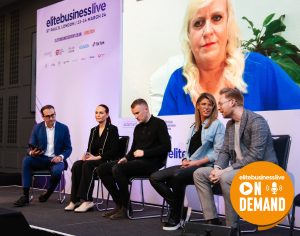A business owner has little choice but to lead their business. And you cannot lead without a destination or goal to guide and direct your leadership. So, what should it be?
I always ask about the future when I meet with a business owner. It’s the only thing we have control over. Mostly, in response to my opening line, “Where do you want to be in 3-5 years from now?”, answers talk about doubling growth or reaching a leading brand status. Alternatively, it is to exit the business, but without a clearly stated value.
I’ve always found these vague answers limiting as a destination. A better approach is to create a framework to lead that incorporates the entire business and team.
A business is a dynamic system of people, products, activities, and money. A single metric or two does not cater to this complexity and is not sophisticated enough to drive the well-being of a business and its intended outcome or destination.
Your company’s enterprise value offers a comprehensive, yet simple-enough-to-manage destination. It requires that you understand how your company would be valued, and the good news is that company valuation is largely in your control. It has five primary levers that you can design, build, manage and pull in your favour to maximise your valuation. At the same time, these “levers” incorporate your team, products, services, customers, and suppliers. It is decidedly comprehensive yet simple.
The levers of valuation can primarily be presented in 5 areas of attention.
Positioning:How do you differentiate your business in the eyes of customers?
To strategically position your business for growth, it is imperative to differentiate it in customers’ eyes by clearly defining your target audience, addressing their problems, and crafting a unique and compelling customer experience. Identify the segments you serve and articulate the value proposition you offer to each.
Measure your success by overall market growth and assess your segment market share expansion. This approach ensures a focused and tailored strategy that resonates with your audience, fostering sustainable business development.
A system of delivery: How do you achieve consistent, reliable customer experiences?
To establish consistent and reliable customer experiences, integrate commercial functions within a unified system to streamline your business positioning. It involves aligning various customer identification, acquisition, fulfilment, and retention activities. By focusing on the seamless coordination of these elements, businesses can achieve a standardised and dependable approach to customer interactions, ensuring continuity and reliability throughout the entire customer journey.
Measure the effectiveness of each commercial function by tracking key outcomes resulting from the activities within the integrated system.
A purposeful team: How do you always get the right people to do the right thing?
To consistently align actions with strategic goals you need a deliberate approach to human resources. Recruit and train new hires to operate the systems that deliver your business positioning. By cultivating a workforce that understands and executes their roles within the overarching business strategy, you can foster a culture where the right people consistently contribute to achieving the right outcomes, enhancing overall organisational effectiveness.
To gauge success, measure staff retention rates and performance outcomes against specific job descriptions.
Growth: How do you grow revenue and profitability?
Accelerate growth by harnessing the power of your scalable commercial platform. If you have pulled the first three levers, the platform now has the capacity to handle increasing demands and adapt to evolving business needs.
Evaluate success through clear metrics, measuring not only overall revenue growth but also assessing improvements in profitability. This approach ensures that as your business expands, the commercial platform remains a dynamic and efficient engine for sustained growth, allowing you to capitalise on emerging opportunities and optimise financial performance.
Dependencies: How do you secure your value?
To secure your business’s enduring value, focus on the succession and transfer of operational and managerial responsibilities. Develop a robust plan that systematically identifies key roles; documents critical processes; and grooms internal talent. By ensuring a smooth transition of duties, you strengthen the organisation’s foundation, mitigating risks associated with key personnel changes. This strategic focus safeguards the continuity of operations. It contributes to your business’s long-term sustainability and resilience, solidifying its intrinsic value.
Applying your time and attention to these five levers and creating a framework around them lets you lead with purpose, intent, and consistency. Suppose you go further and involve your leadership team in defining the framework. In that case, it brings the efforts of your leadership team and their teams together within a framework everyone understands and is governed by.
Leadership is about building confidence and clarity of purpose. It’s about getting your people on board and ensuring you are sailing towards one articulated destination. Getting it right is hard until it is not. The starting point is choosing that destination.
Share via:








































